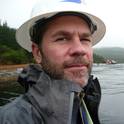
This paper presents a complete methodology for both probabilistic and deterministic assessment of seismic soil liquefaction triggering potential based on the cone penetration test (CPT). A comprehensive worldwide set of CPT-based liquefaction field case histories were compiled and back analyzed, and the data then used to develop probabilistic triggering correlations. Issues investigated in this study include improved normalization of CPT resistance measurements for the influence of effective overburden stress, and adjustment to CPT tip resistance for the potential influence of "thin" liquefiable layers. The effects of soil type and soil character (i.e., "fines" adjustment) for the new correlations are based on a combination of CPT tip and sleeve resistance. To quantify probability for performance-based engineering applications, Bayesian "regression" methods were used, and the uncertainties of all variables comprising both the seismic demand and the liquefaction resistance were estimated and included in the analysis. The resulting correlations were developed using a Bayesian framework and are presented in both probabilistic and deterministic formats. The results are compared to previous probabilistic and deterministic correlations.
Available at: http://works.bepress.com/rmoss/9/
